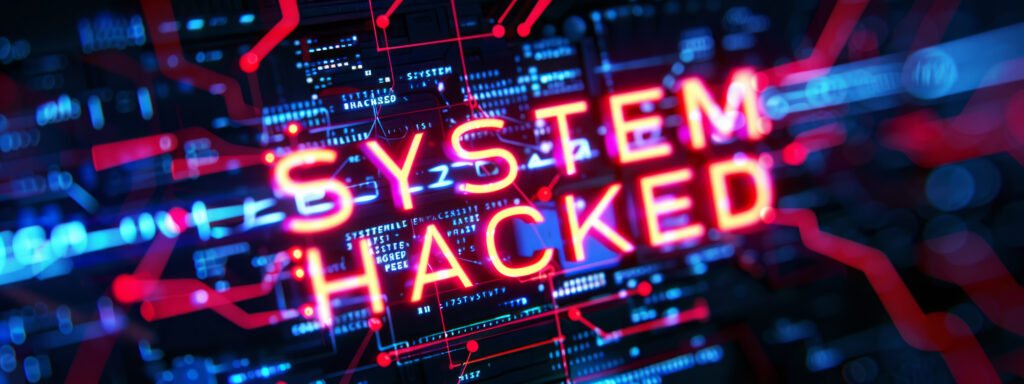
Understanding the Mechanics of Cyber-Attacks
In an age where digital transformation is the norm, cybersecurity remains a significant concern for business leaders. The sophistication of cyber-attacks has evolved dramatically and understanding how these attacks happen is crucial in developing effective defences.
The Human Factor in Cyber Attacks
A commonly overlooked aspect of cyber-attacks is the human element. Social engineering and insider threats remain two of the most prevalent methods exploited by cybercriminals. Social engineering involves manipulating individuals into divulging confidential information, often through phishing emails or deceptive phone calls. These tactics prey on human psychology rather than technology, making them particularly insidious.
Insider threats, on the other hand, involve individuals within the organisation who have access to sensitive information. These can be disgruntled employees or those who have been compromised by external actors. Regardless of their motives, insider threats can be devastating due to the level of access they possess.
Cybersecurity Challenges in a Post-Pandemic World
Following the pandemic, the shift to remote work has posed new cybersecurity challenges for organisations. With employees accessing corporate networks from various locations, traditional security infrastructures are often inadequate. This dispersion has increased the attack surface, giving cybercriminals more opportunities to exploit vulnerabilities.
Remote work environments frequently rely on virtual private networks (VPNs) to secure connections, but these can become overwhelmed, leading to potential breaches. Moreover, personal devices used for professional purposes are typically less secure than corporate-issued hardware, making them prime targets for cyber-attacks. Organisations must therefore adopt new strategies to safeguard their networks, such as implementing endpoint detection and response systems, enhancing cloud security measures, and ensuring employees receive rigorous training on security best practices for home offices.
These challenges underscore the necessity for continuous adaptation in cybersecurity policies and practices, as the digital landscape continues to evolve rapidly in reaction to global events.
Evolution of Cyber Attack Methods
The methods employed by cybercriminals have evolved significantly over the years. Traditional malware, such as viruses and worms, were once the primary tools used to compromise systems. However, today’s landscape is dominated by more sophisticated tactics, including AI-powered attacks.
AI and machine learning have given rise to advanced persistent threats (APTs) that can adapt and evolve over time, making them harder to detect and mitigate. These attacks can autonomously scan for vulnerabilities, exploit them, and even learn from failed attempts to improve future attacks.
Industry Preparedness and Its Impact
Different industries exhibit varying levels of preparedness when it comes to cybersecurity. For instance, the financial sector generally invests heavily in cybersecurity measures due to the high value of the data they handle. In contrast, sectors like healthcare often lag, making them more susceptible to attacks.
The frequency and severity of cyber-attacks are directly influenced by an industry’s level of preparedness. Industries that prioritise cybersecurity tend to experience fewer incidents and recover more quickly from breaches. Conversely, those with inadequate defences often face more significant consequences, including severe financial loss and reputational damage.
Responsibility in Preventing Cyber Attacks
The responsibility for preventing cyber-attacks lies with both organisations and individuals. Organisations must implement robust security measures, including firewalls, intrusion detection systems, and regular security audits. Additionally, employee education and training are critical in mitigating the risk posed by social engineering and insider threats.
Individuals, particularly those in leadership positions, must also take responsibility for their cybersecurity practices. This includes adopting strong, unique passwords, being vigilant against phishing attempts, and keeping abreast of the latest cybersecurity trends and threats.
The Future of Cybersecurity
Looking ahead, emerging technologies and strategies promise to reshape the cybersecurity landscape. Blockchain, for example, offers a decentralised approach to security that could make it harder for cybercriminals to compromise systems. Similarly, advances in quantum computing have the potential to revolutionise encryption methods, making data breaches significantly more difficult.
Another promising development is the concept of zero-trust architecture. This approach assumes that threats can be both external and internal, and therefore no user or system should be trusted by default. Implementing zero-trust principles can significantly enhance an organisation’s security posture.
Conclusion
Cyber-attacks will continue to be a pressing issue for business leaders. By understanding the mechanics of these attacks and recognising the importance of both technological and human factors, organisations can better prepare and protect themselves. Proactive measures, continuous education, and a forward-thinking approach to emerging technologies will be essential in staying ahead of cybercriminals.
For a deeper understanding of how to bolster your organisation’s cybersecurity defences, consider consulting with industry experts or investing in comprehensive security solutions tailored to your specific needs.
